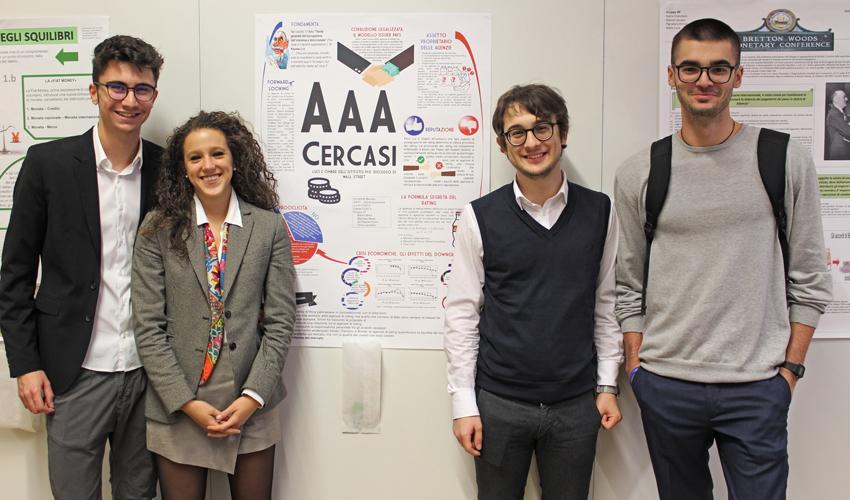
A Poster to Represent Globalization
ECONOMIC HISTORY DAY, A DAY IN WHICH STUDENTS DREW ON HISTORY TO EXPLAIN A TOPICAL THEME THROUGH AN ACADEMIC POSTER. THE 12 BEST WORKS VOTED BY STUDENTS WILL BE AWARDED ON DECEMBER 1Formulate a research question on the theme of globalization, identify variables that explain a given phenomenon, establish logical connections and represent it all in a 70x100cm academic poster, similar to those used by PhDs to present their studies. This was the challenge faced by undergraduate students in their second year of Business Economics and Management (CLEAM), Economics and Social Sciences (CLES) and Economics and Finance (CLEF) in occasion of the Economic History Day, during which they presented in an open session the results of their research. The 12 groups rated by students themselves as those who have realized the best posters, will be rewarded on December 1 from 12.30pm in the atrium of the Velodromo Building.
The common denominator of all works is history. “Academics are accustomed to this: when uncertainty is great, we turn to history ", explains Adrea Colli, Professor of Economic History who introduced this learning experiment in his class in 2014. “History allows us to read the present. For this reason, the work of our students is a historical research, but with a strong connection with current issues". As, in this case, globalization and its different paths: the transformation of the global chains of value, the evolution of the transport system, industry 4.0, the challenges of ‘Made in Italy’ in a global context, the evolution of financial systems and the impact of globalization on inequality.
Graphs, pie charts, time lines, maps, eye-catching graphics and an explosion of colors characterize the posters realized by students, such as that of the group of Luca Gherardi, CLEAM student: "We have represented, through a time line, the evolution of the relationship between institutions and the Olivetti company, to try to demonstrate how institutions can play an important role in the success or failure of a company".
“Thinking of representing an idea graphically seems really complicated at the beginning", says Guido Montedoro (ClLES), "It proved to be fundamental, and fun too, to work in teams, because everyone shares their skills, who with graphics, who with synthesis, and together we have achieved a good result". "Moreover,” adds Marta Bilghese (CLEF student, in the picture with her group), "synthesizing so much information and making it easy to understand at first glance, is certainly useful for those who listen, but perhaps it was more useful for us to understand in depth what we were talking about".
by Benedetta Ciotto
